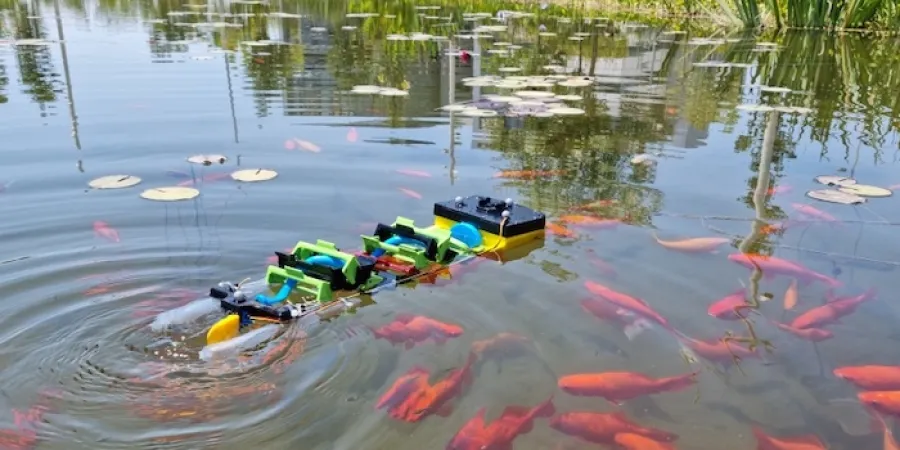Ben Gurion University team introduces new amphibious robot
Powered by a single motor, the robot's movements mirror the way flippers move in water and centipedes move on land
Cybertech
| 22/02/2023
Ben-Gurion University of the Negev engineer Dr. David Zarrouk and his student Omer Guetta have developed AmphiSAW, one of the fastest and most efficient amphibious robots.
Befitting the director and member of the Bioinspired and Medical Robotics Lab, the robot's movement in water is inspired by the movement of flippers and its land movements are inspired by centipedes.
The robot has potential applications in search and rescue, especially during natural disasters such as floods and tsunamis. It also has potential applications in marine agriculture and fish feeding as the robot attracts fish instead of repelling them.
Whether on land or in the water, the robot moves quite quickly. On land, the robot crawled at 1.5 body lengths per second (B/s) and swam at 0.74 B/s. It can be outfitted with legs or wheels at the front which increases its crawl speed, especially over uneven terrain.
"The single motor and bioinspired design contribute significantly to the robot's efficiency and the relative simplicity of its design means it is scalable to any size," explains Dr. Zarrouk. His research goal is to produce robots that can complete complex maneuvers yet use very little power to run and are straightforward to produce.
Powered by a single motor, the robot's movements mirror the way flippers move in water and centipedes move on land
Ben-Gurion University of the Negev engineer Dr. David Zarrouk and his student Omer Guetta have developed AmphiSAW, one of the fastest and most efficient amphibious robots.
Befitting the director and member of the Bioinspired and Medical Robotics Lab, the robot's movement in water is inspired by the movement of flippers and its land movements are inspired by centipedes.
The robot has potential applications in search and rescue, especially during natural disasters such as floods and tsunamis. It also has potential applications in marine agriculture and fish feeding as the robot attracts fish instead of repelling them.
Whether on land or in the water, the robot moves quite quickly. On land, the robot crawled at 1.5 body lengths per second (B/s) and swam at 0.74 B/s. It can be outfitted with legs or wheels at the front which increases its crawl speed, especially over uneven terrain.
"The single motor and bioinspired design contribute significantly to the robot's efficiency and the relative simplicity of its design means it is scalable to any size," explains Dr. Zarrouk. His research goal is to produce robots that can complete complex maneuvers yet use very little power to run and are straightforward to produce.



